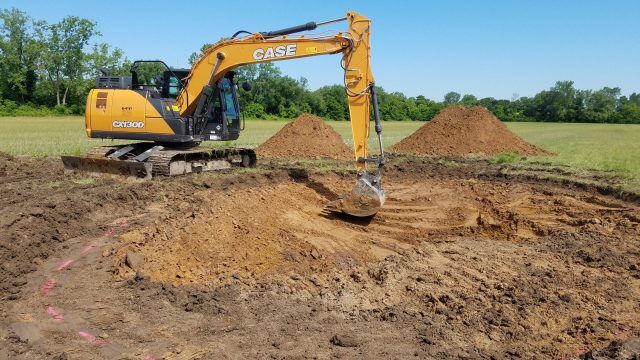 Water tends to attract attention. The gentle sounds of flowing water sooth our senses. We feel an automatic connection to the soft, rippling current and the mesmerizing creatures that generally come along with it. Incorporating a water feature, water garden or pond into your landscape can help you relax and decompress at the end of a long day and attract creatures rarely seen, such as children playing outside. When considering a pond or water feature to compliment your landscape there are a number of factors to address before work begins.
Water tends to attract attention. The gentle sounds of flowing water sooth our senses. We feel an automatic connection to the soft, rippling current and the mesmerizing creatures that generally come along with it. Incorporating a water feature, water garden or pond into your landscape can help you relax and decompress at the end of a long day and attract creatures rarely seen, such as children playing outside. When considering a pond or water feature to compliment your landscape there are a number of factors to address before work begins.
Why do you want a pond, water garden or water feature? Although this may seem like a silly question many homeowners neglect to think about it. Large ponds can be used for family fun like fishing and boating but they can also be used for fire suppression and irrigation. Water gardens and water features can be used to add curb appeal to the front yard, draw visitors to other parts of your garden or to suppress undesirable noise like expressway traffic and noisy neighbors.
Where are you intending to add your pond or water feature? Are you considering constructing or renovating your deck or patio? Some towns may require a permit depending on the size and location of the pond or water garden. Water gardens have started to become regulated by zoning laws. Check with your local code enforcement officer to determine what your requirements are before you start digging. And speaking of digging, you will need to determine if you will need excavating equipment for your project or not. If you are digging a hole you will need to know how much soil you intend to remove from the ground and where it is going to go. Any time you are going to dig a hole in the ground it is best to make a phone call to your homeowners insurance agency to determine your liability coverage as well as your local “Call before you dig” utilities stake out. After you have determined your requirements and where utility lines are you are ready to move onto the next consideration.
What are the current conditions of your site now and is electricity available? It is important to know how rainwater currently flows and if adding an impermeable liner will cause water to flow or pool up in undesirable locations. Consider how exposure to natural elements like wind, rain, snow and sun exposure already affect the location currently and any benefit or hindrance that may have on your project. For example, a water garden would look stunning and be shaded under a beautiful old oak tree but building there could damage the roots of the tree or the tree’s roots could grow to puncture and damage the liner material. The oak’s massive leaves would dump into the pond every year causing water quality issues.
What are you willing to spend? The actual dollar amount you have to spend on a project is easy to figure out. Determining how much of your time you want to spend is often overlooked. All ponds, water gardens and water features will require some kind of maintenance. Even a pondless water feature will have to have water added to it, its basin cleaned of debris and perhaps the pump removed for winter in freezing climates. How much of your time are you willing to spend on not only caring for your water garden but also learning how to care of a water garden? If you feel it is beyond your expertise or you just don’t have time to do it how much are you willing to pay a company like National Pond Service to take care of it for you?
Once you have gone through these major considerations you are ready for the fun part, designing your new pond, water garden or water feature. Do as much research as you can and keep in mind that information that is repeated is usually correct. Talk to as many people with water features or ponds as you can to learn from their joys and mistakes. Contact your local garden center or garden publications to find information on gardening clubs or koi clubs in your area. Many people who own ponds, water gardens or water features are excited to share what they have learned and what they would or would not do again. Remember to take a lot of before and after photos so you can share your experiences with future water garden and pond owners.


